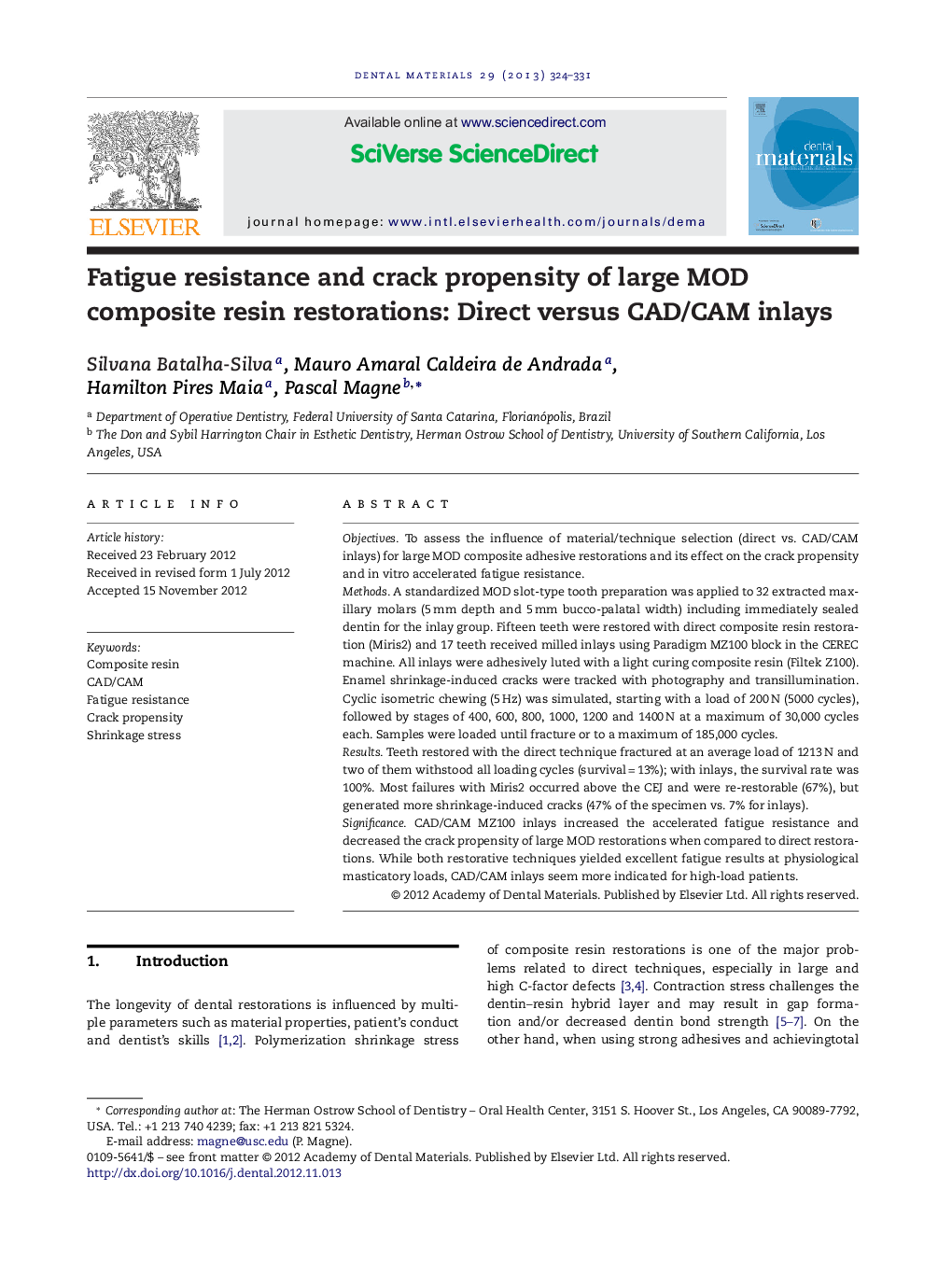| Article ID | Journal | Published Year | Pages | File Type |
|---|---|---|---|---|
| 1421284 | Dental Materials | 2013 | 8 Pages |
ObjectivesTo assess the influence of material/technique selection (direct vs. CAD/CAM inlays) for large MOD composite adhesive restorations and its effect on the crack propensity and in vitro accelerated fatigue resistance.MethodsA standardized MOD slot-type tooth preparation was applied to 32 extracted maxillary molars (5 mm depth and 5 mm bucco-palatal width) including immediately sealed dentin for the inlay group. Fifteen teeth were restored with direct composite resin restoration (Miris2) and 17 teeth received milled inlays using Paradigm MZ100 block in the CEREC machine. All inlays were adhesively luted with a light curing composite resin (Filtek Z100). Enamel shrinkage-induced cracks were tracked with photography and transillumination. Cyclic isometric chewing (5 Hz) was simulated, starting with a load of 200 N (5000 cycles), followed by stages of 400, 600, 800, 1000, 1200 and 1400 N at a maximum of 30,000 cycles each. Samples were loaded until fracture or to a maximum of 185,000 cycles.ResultsTeeth restored with the direct technique fractured at an average load of 1213 N and two of them withstood all loading cycles (survival = 13%); with inlays, the survival rate was 100%. Most failures with Miris2 occurred above the CEJ and were re-restorable (67%), but generated more shrinkage-induced cracks (47% of the specimen vs. 7% for inlays).SignificanceCAD/CAM MZ100 inlays increased the accelerated fatigue resistance and decreased the crack propensity of large MOD restorations when compared to direct restorations. While both restorative techniques yielded excellent fatigue results at physiological masticatory loads, CAD/CAM inlays seem more indicated for high-load patients.
